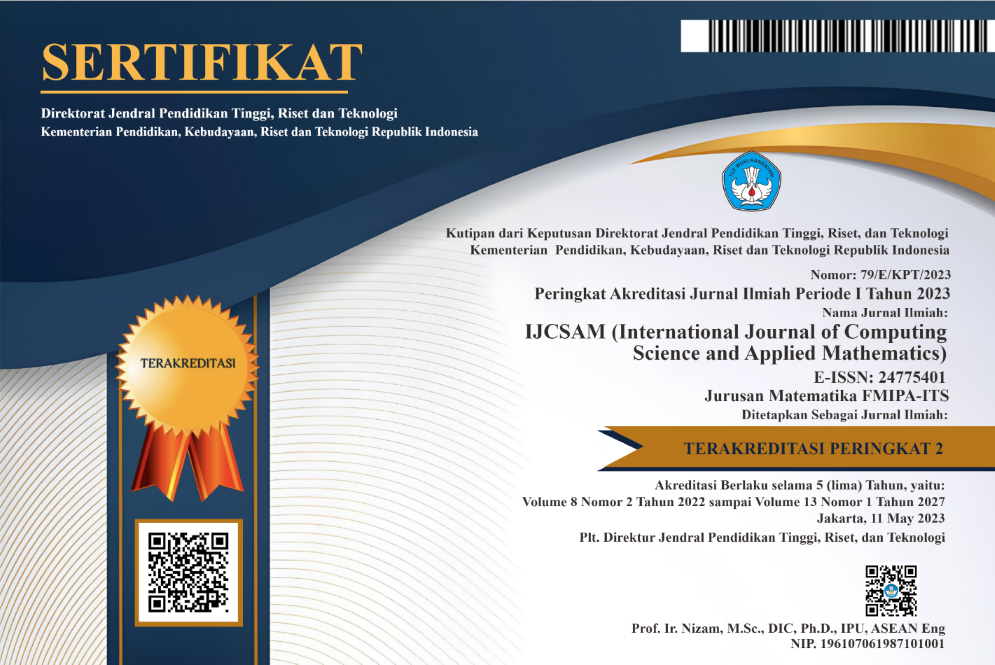Numerical Simulation of Fluid Flow Around Circular Cylinder and Three Passive Controls to Reduce Drag Coefficient at Re=500
Abstract
Keywords
Full Text:
PDFReferences
Y. Triyogi, D. Suprayogi, and E. Spirda, “Reducing the drag on a circular cylinder by upstream installation of an I-type bluff body as passive control,” Proceedings of the Institution of Mechanical Engineers, Part C: Journal of Mechanical Engineering Science, vol. 223, no. 10, pp. 2291–2296, 2009.
T. Igarashi and Y. Shiba, “Drag reduction for D-shape and I-shape cylinders,” JSME International Journal Series B Fluids and Thermal Engineering, vol. 49, no. 4, pp. 1036–1042, 2006.
T. Yuwono and W. Widodo, “Flow characteristic around a D-type cylinder near a plane wall,” in Regional Conferences on Mechanical and Aerospace Technology, Bali, 2010.
B. Widodo, T. Yuwono, and C. Imron, “The influence of distance between passive control and circular cylinder on wake,” in Journal of Physics: Conference Series, vol. 890, no. 1, 2017, p. 012053.
C. Imron, L. Mardianto, B. Widodo, and T. Yuwono, “Mathematical modeling of drag coefficient reduction in circular cylinder using two passive controls at Re=1000,” Mathematical and Computational Applications, vol. 23, no. 1, p. 2, 2018.
A. Hakam, B. Widodo, T. Yuwono, and C. Imron, “Numerical investigation of the flow around circular cylinder with two passive controls,” in Journal of Physics: Conference Series, vol. 974, no. 1, 2018, p. 012011.
C.-H. Kuo and C.-C. Chen, “Passive control of wake flow by two small control cylinders at Reynolds number 80,” Journal of fluids and structures, vol. 25, no. 6, pp. 1021–1028, 2009.
Y. Bao and J. Tao, “The passive control of wake flow behind a circular cylinder by parallel dual plates,” Journal of Fluids and Structures, vol. 37, pp. 201–219, 2013.
L. Lu, M. Liu, B. Teng, Z. Cui, G. Tang, M. Zhao, and L. Cheng, “Numerical investigation of fluid flow past circular cylinder with multiple control rods at low Reynolds number,” Journal of Fluids and Structures, vol. 48, pp. 235–259, 2014.
H. Versteeg and W. Malalasekera, An introduction to computational fluid dynamics: the finite volume method. Pearson education, 2007.
M. Matyka, “Solution to two-dimensional incompressible Navier-Stokes equations with simple, simpler and vorticity-stream function approaches. driven-lid cavity problem: Solution and visualization,” arXiv preprint physics/0407002, 2004.
T. Bergman, F. Incropera, D. DeWitt, and A. Lavine, Fundamentals of heat and mass transfer. John Wiley & Sons, 2011.
R. Burden and J. Faires, “Numerical differentiation & integration numerical differentiation I,” Numerical analysis, pp. 174–184, 2011.
DOI: http://dx.doi.org/10.12962%2Fj24775401.v6i1.5331
Refbacks
- There are currently no refbacks.
View My Stats

International Journal of Computing Science and Applied Mathematics by Pusat Publikasi Ilmiah LPPM, Institut Teknologi Sepuluh Nopember is licensed under a Creative Commons Attribution-ShareAlike 4.0 International License.
Based on a work at https://iptek.its.ac.id/index.php/ijcsam.






